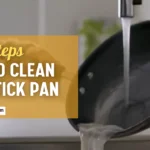Introduction:
Coffee is a staple drink for many people around the world. It has been proven to have numerous health benefits, including reducing the risk of type 2 diabetes and liver disease. However, coffee makers can become quite grimy over time, making it difficult to enjoy a fresh and flavorful cup of coffee. Fortunately, several tips can help keep your coffee maker sparkling clean.
One important tip is to clean your coffee maker regularly. This means washing the carafe, filter basket, and other removable parts after each use with warm soapy water. Additionally, running a mixture of vinegar and water through the machine once a month can help remove any buildup or residue that may be affecting the taste of your coffee.
Overview of How to get rid of mineral buildup in the coffee maker:
Mineral buildup in coffee makers can affect the quality of your brew. It can cause clogs, which can lead to slow brewing and even complete malfunctioning of the machine. However, getting rid of this buildup is not rocket science. There are different methods that you can use to ensure that your coffee maker stays clean and functional.
One approach is using vinegar to remove mineral buildup in your coffee maker. Another option is using baking soda; it’s mildly abrasive and will help scrub away any remaining mineral residue. After getting rid of the mineral buildup, remember to rinse out your coffee maker thoroughly before brewing again. With these tips, you’ll be enjoying delicious, grit-free cups of coffee from a clean machine faster than ever!
10 ways How to get rid of mineral buildup in the coffee maker
1. Vinegar and water solution:
To make the solution, mix equal parts of white vinegar and water in a measuring cup or pitcher. Then, pour the vinegar and water mixture into the reservoir and turn on the machine as if you were brewing a pot of coffee. Let it run halfway through, then pause for about 15 minutes to let the solution do its magic. Finally, resume brewing until all of the mixtures have passed through. Afterward, rinse out your carafe thoroughly with hot water to remove any lingering vinegar smell or taste.
2. Lemon juice and water solution:
To make the solution, mix equal parts of lemon juice and water in a container. Pour the mixture into the coffee maker’s water reservoir and run it through a brewing cycle without any coffee grounds. Discard the mixture once the cycle is complete, then rinse the carafe and filter basket thoroughly with clean water.
3. Baking soda and water solution:
To create the solution, mix two tablespoons of baking soda with one cup of water. Stir until the baking soda dissolves completely. Then, pour the solution into the water tank of your coffee maker and run a brewing cycle as you normally would. The mixture will work to break down any buildup or residue inside your machine. After running the cycle, rinse out the water tank thoroughly with clean water and repeat as necessary until all traces of buildup are gone.
4. Citric acid and water solution:
Citric acid is a natural substance found in fruits like lemons and oranges. It has strong acidic properties that make it an excellent cleaning agent for removing stubborn stains and buildup. To use citric acid to clean your coffee maker, simply mix one tablespoon of citric acid with one quart of water and run it through a brewing cycle. Repeat this process with plain water several times until there are no more traces of citric acid left in the machine.
5. Commercial coffee maker cleaner:
Using a commercial coffee maker cleaner is highly recommended to ensure that the machine is free from any residue or buildup that could affect the flavor of the coffee or create health hazards.
There are various types of cleaners available for commercial coffee makers, including powder cleaners and liquid solutions. It is important to follow the manufacturer’s instructions for using the cleaner to avoid damaging the machine.
6. Denture tablets and water solution:
Denture tablets aren’t just for dentures. They can also be used to clean a variety of household items, including coffee makers. Simply dissolve a couple of tablets in water and pour the solution into the water reservoir of your coffee maker. Run a brewing cycle without any coffee grounds, then rinse thoroughly with plain water. The result? A sparkling clean coffee maker that will brew tasty, fresh-tasting java.
7. Scrubbing with a brush or sponge:
One of the most important steps in achieving a sparkling coffee maker is scrubbing with a brush or sponge. A brush can be especially effective in getting into all the nooks and crannies of your machine, ensuring that every inch is thoroughly cleaned. It’s important to use a brush with soft bristles to avoid scratching surfaces or damaging any delicate parts.
When scrubbing with either a brush or sponge, it’s vital to use gentle pressure so as not to damage any components of your machine. Always read the manufacturer’s instructions beforehand and take extra care when cleaning electrical parts or wires.
8. Use filtered or distilled water:
Filtered water removes impurities and chlorine that can affect the taste of your coffee. It also reduces mineral content like calcium and magnesium, preventing them from building up inside your machine. Distilled water is a great alternative to filtered water because it has been stripped of all minerals and impurities through a process of heating and condensation.
9. Regular cleaning and maintenance:
To begin cleaning the coffee maker, start by emptying any remaining water or coffee grounds from the carafe. Then fill the reservoir with equal parts white vinegar and water, turn on the machine and let it run through a brewing cycle. Once completed, discard the mixture from the carafe and rinse all components thoroughly with hot water.
10. Prevention measures such as descaling regularly and using a water softener:
Descaling your coffee maker regularly is one of the most important prevention measures to ensure a clean and hygienic brewing experience. Hard water leaves mineral deposits in the machine, which can clog it up and reduce its efficiency. By descaling, you remove these deposits and prevent the build-up of bacteria and mold. Descaling should be done at least once every three months or more frequently if your water is particularly hard.
Using a water softener is another effective way to prevent mineral buildup in your coffee maker. Softening systems remove minerals such as calcium and magnesium from the water before it enters the appliance, reducing scale formation and prolonging the life of your machine.
Conclusions:
Maintaining a clean coffee maker is essential for ensuring the best quality of your morning brew. By regularly cleaning and descaling your machine, you can avoid the buildup of mineral deposits and bacteria that can compromise the taste and aroma of your coffee. With these tips and tricks, you can say goodbye to grimy coffee makers and hello to sparkling brews. So why not start today? Take a few minutes to give your machine a deep clean so that you can enjoy every sip of your favorite coffee without any unwanted flavors or odors. Your taste buds will thank you!



